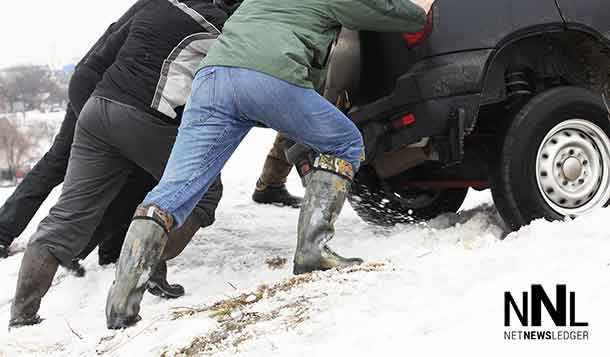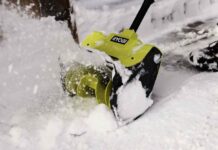Thunder Bay — Winter storms have been hitting the country with an outlook for continued blizzard conditions and extremely cold temperatures. Living in Northwestern Ontario, one might think that winter conditions and knowing how to drive on snow-packed and icy roads would be old school for drivers. However, the number of drivers having accidents on slippery roads, and the number of people who seem not prepared for those conditions seems far greater.
Repetition is great some say, so in the spirit that perhaps there are a few tips here that might help save a life, here are some tips from the folks at Chevy to make your winter drive safer.
Check out our top ten list of winter driving tips to help you stay safe and prepared on the road.
BE PREPARED BEFORE YOU HIT THE ROAD
Don’t drive on Empty: Bad weather can cause unexpected delays, so keep your gas tank at least half full and your cell phone charged. Making sure you have a power cord, and adapter to charge your phone is likely a good idea.
Prepare your car for winter: Have your dealer or a trusted mechanic do any scheduled service. Make sure your battery, tires, lights, wiper blades, and other critical parts are ready for winter. Check tire pressures, as they can drop as the weather gets colder.
Consider winter tires: Winter tires provide added traction in snow and ice, even for vehicles with four-wheel-drive or all-wheel-drive. If you drive regularly in winter weather, a set of winter tires can be a smart investment.
Know your vehicle: Review the sections of your owner’s manual covering antilock brakes, traction control, and four- or all-wheel-drive (if equipped) to make sure you are comfortable with their operation. For quick and easy access to your owner’s manual, check out the myChevrolet app.
Stock your car: In addition to a snow brush and ice scraper, it’s a good idea to carry a snow shovel and abrasive material such as sand or cat litter. Jumper cables, a flashlight, and emergency flares can help if you encounter unexpected problems. Cold weather clothing and an emergency blanket(s) or sleeping bag(s) can be critical if you are stuck or stranded.
WHAT TO DO WHEN BEHIND THE WHEEL
Maintain your momentum: If you must travel up a hill in snowy conditions, it’s important to leave enough room in front of you and maintain your momentum while traveling uphill. Stopping in the middle of a hill can result in the driver becoming stuck.
Changing lanes: If you are going to change lanes, you may want to look for patches of snow-covered pavement, these areas often provide better traction for maneuvers. Once you signal for your turn and begin to maneuver to the next lane if the vehicle slips it’s important to remember not to overcorrect or panic, the StabiliTrak® system will assist in your maneuver.
In case of a skid: Don’t pump the brakes. Look in the direction you want the car to go and steer smoothly in that direction. For modern vehicles with antilock brakes, don’t pump the brakes. Rather, maintain pressure on the pedal and let the ABS system modulate the braking.
If the vehicle gets stuck: Depending on your vehicle’s ground clearance and the snow conditions, you can sometimes gently rock the vehicle free. Turn the steering wheel left and right to clear the area around the front wheels (or using a snow shovel). Turn off any traction system. Gently shift back and forth between reverse and a low forward gear, spinning the wheels as little as possible. This creates a rocking motion that may help free the vehicle. However, if after a few attempts you are unsuccessful, it’s important to know when to call for help.
If the vehicle is stranded: For a GM vehicle with OnStar, you can call OnStar for assistance. The winter driving section of the owner’s manual has detailed instructions for intermittently running the vehicle to keep the interior warm. Be sure to clear snow from the base of the vehicle, especially any snow blocking the exhaust pipe. Open a window about two inches on the vehicle side away from the wind to bring in fresh air.








